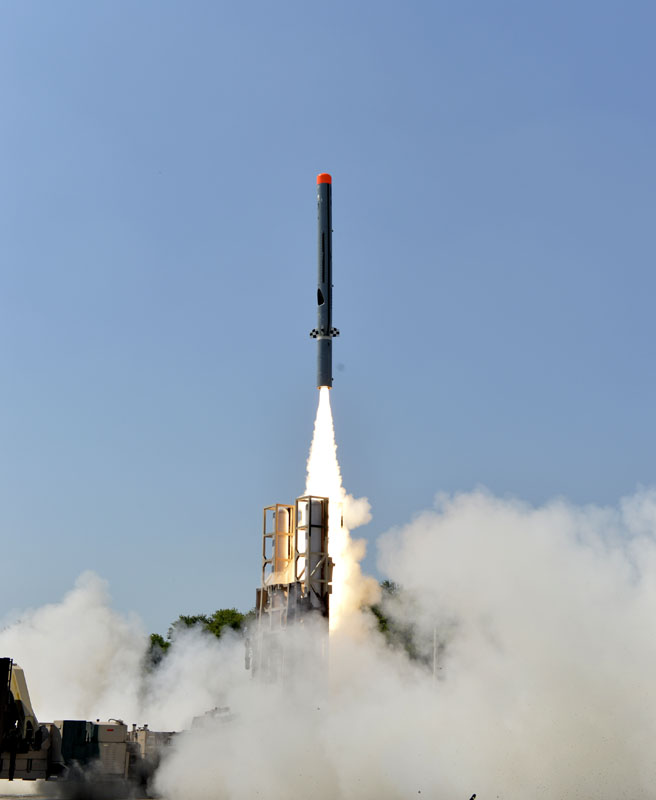The ‘Nirbhay’ ground launched cruise missile (GLCM), developed by the Defence Research and Development Organisation’s (DRDO’s) Aeronautical Development Establishment (ADE), Bengaluru, was successfully tested earlier today from the Integrated Test Range (ITR), in Chandipur, Odisha. This morning’s test marked the fifth flight trial of the Nirbhay and the success of the same has served to remove doubts about the viability of this system, which was under a bit of cloud after having failed in its last two tests.
However, today’s test validated the guidance, control and navigation system of the missile which is configured around a highly advanced inertial navigation system (INS) developed by DRDO’s Research Center Imarat (RCI). RCI’s INS package is based on a ring laser gyroscope (RLG) and a MEMS-inertial measurement unit (IMU) for redundancy , both of which it has developed. This RLG & MEMS based INS package is capable of receiving multi-constellation satellite navigation updates.
The missile, which has a length of 6.0 metres (m), a deployed wingspan of under 3.0 m, a diameter of 0.52 m and a weight of about 1500 kg, can carry nuclear or conventional payloads of up to 300 kg out to a distance of more than a 1000 km. Nirbhay has the capability to loiter and cruise at 0.7 Mach, and at altitudes as low as 100 m. According to India’s Ministry of Defence (MOD), this morning’s flight test ‘achieved all mission objectives completely, from lift-off till the final splash, boosting the confidence of all scientists associated with the trial’.
Video of this morning’s (07.11.2017) Nirbhay GLCM test. Courtesy: DRDO
MOD further stated that ‘the missile took-off in the programmed manner and all critical operations viz. launch phase, booster deployment, engine start, wing deployment and other operational parameters demonstrated through autonomous way point navigation. The missile majestically cruised for a total time duration of 50 minutes, achieving the range of 647 km. The missile was tracked with the help of ground based radars and other parameters were monitored by indigenous telemetry stations developed by DRDO’.
India’s Defence Minister, Nirmala Sitharaman, ‘hailed the success of DRDO’s Scientists’ and ‘complimented them for this inspired achievement. She was optimistic that this successful trial ‘would take India into a select League of Nations who possess this complex technology and sub-sonic cruise missile capability’. Chairman DRDO and Secretary Department of Defence (R&D), Dr. S Christopher, DG (Aero) Dr. CP Ramanarayanan, Director ADE, RCI , ITR and CEMILAC, along with other senior DRDO scientists and user representatives from the Army witnessed the momentous launch and congratulated ‘Team Nirbhay’ for making ‘DRDO proud for the long awaited achievement’.In the future, the Nirbhay is also likely to be adapted to sea-based and aerial platforms, although at the moment it is being developed as a GLCM for the Indian Army.
Featured Image: The Nirbhay GLCM during this morning’s launch. Courtesy: PIB
© Delhi Defence Review. Reproducing this content in full without permission is prohibited.
































